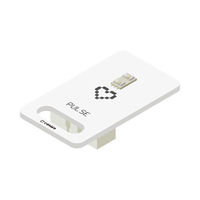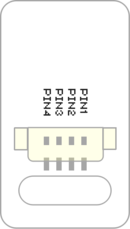Difference between revisions of "Sensor-Pulse"
From Microduino Wiki
(→Specification) |
(→Document) |
||
| Line 45: | Line 45: | ||
==Document== | ==Document== | ||
| − | * | + | *Schematic diagram: '''[[File: Sensor-Pulse.Zip]]''' |
| − | * | + | *Main chip: '''[[File:SON1303_datasheet.pdf ]]''' |
| − | + | *Extension document: [https://forum.microduino.cn/topic/259/microduino%E5%BF%83%E8%B7%B3%E6%A8%A1%E5%9D%97%E4%B8%AD%E6%96%AD%E6%B3%95%E6%B5%8B%E9%87%8F%E4%B8%A4%E5%88%99%E7%AE%80%E4%BB%8B Pulse Module Interrupt Method Measurement] | |
==Development== | ==Development== | ||
Revision as of 08:04, 10 November 2016
| Language: | English • 中文 |
|---|
|
The product number of Sensor-Pulse is: MSDI31 Sensor-Pulse is a heart rate or pulse sensor of photoelectrical principle. Sensor-Pulse takes advantage of the sensitivity of the infrared with specified wavelength to the change of the blood volume produced by the blood microcirculation in the end of the blood vessel to detect the change of fingertip blood caused by heart beat. The sensor can output the completed pulse wave voltage signal reflecting the change of the fingertip blood volume.
ContentsIntroduction of Pins
Features
Specification
Document
DevelopmentPreparation
Program
Hardware Buildup
ApplicationMicroduino-Pulse sensor can be applied in smart hand belt, detecting heartbeats during physical exercise so that you can adjust yourself.
ProjectPurchaseHistoryPictures
|



